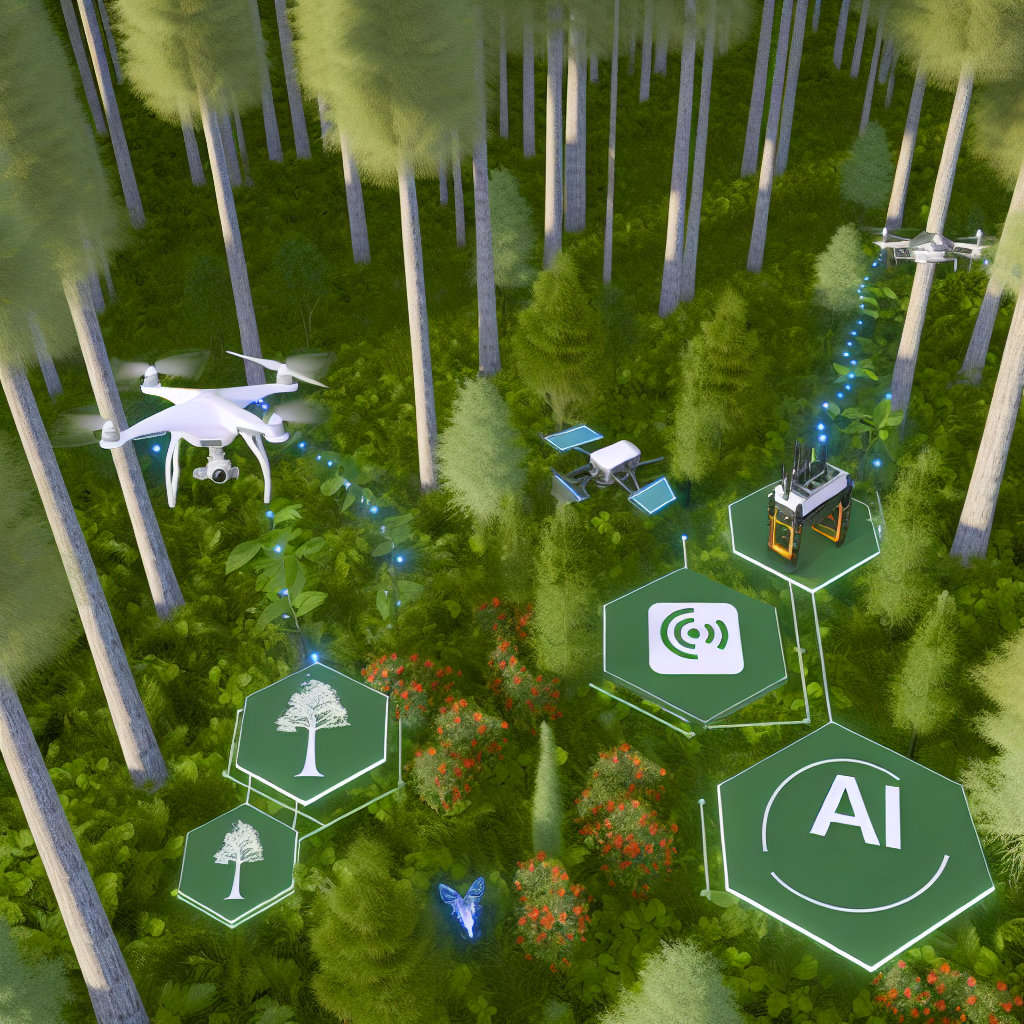-
- AI for Forest Management: A Technical Guide
- Understanding AI in Forest Management
- Configuration Steps for Implementing AI in Forest Management
- Step 1: Define Objectives
- Step 2: Data Collection
- Step 3: Data Preprocessing
- Step 4: Model Selection
- Step 5: Model Training
- Step 6: Model Evaluation
- Step 7: Deployment
- Practical Examples of AI in Forest Management
- Example 1: Forest Health Monitoring
- Example 2: Timber Yield Prediction
- Best Practices for AI Implementation in Forest Management
- Case Studies and Statistics
- Conclusion
AI for Forest Management: A Technical Guide

As the world grapples with climate change and biodiversity loss, effective forest management has become increasingly critical. Artificial Intelligence (AI) offers innovative solutions to enhance forest management practices, enabling better decision-making, resource allocation, and conservation efforts. This guide explores the application of AI in forest management, providing actionable steps, practical examples, and best practices to harness its potential.
Understanding AI in Forest Management
AI technologies, including machine learning, remote sensing, and data analytics, can significantly improve forest management by:
- Enhancing data collection and analysis
- Predicting forest health and growth
- Monitoring biodiversity
- Optimizing resource management
Configuration Steps for Implementing AI in Forest Management
Step 1: Define Objectives
Identify the specific goals of implementing AI in your forest management practices. Common objectives include:
- Improving timber yield
- Enhancing biodiversity conservation
- Monitoring forest health
Step 2: Data Collection
Gather relevant data for analysis. This may include:
- Satellite imagery
- Drone footage
- Ground-based measurements (e.g., tree height, species identification)
Step 3: Data Preprocessing
Clean and preprocess the collected data to ensure accuracy. This involves:
- Removing noise from satellite images
- Normalizing data formats
- Handling missing values
Step 4: Model Selection
Choose appropriate AI models based on your objectives. Common models include:
- Convolutional Neural Networks (CNNs) for image analysis
- Random Forest for classification tasks
- Recurrent Neural Networks (RNNs) for time-series predictions
Step 5: Model Training
Train your selected model using the preprocessed data. For example, using Python and TensorFlow, you can implement a CNN as follows:
import tensorflow as tf
from tensorflow.keras import layers, models
model = models.Sequential()
model.add(layers.Conv2D(32, (3, 3), activation=’relu’, input_shape=(image_height, image_width, channels)))
model.add(layers.MaxPooling2D((2, 2)))
model.add(layers.Flatten())
model.add(layers.Dense(64, activation=’relu’))
model.add(layers.Dense(num_classes, activation=’softmax’))
model.compile(optimizer=’adam’, loss=’sparse_categorical_crossentropy’, metrics=[‘accuracy’])
model.fit(train_images, train_labels, epochs=10)
Step 6: Model Evaluation
Evaluate the model’s performance using a separate validation dataset. Key metrics to consider include:
- Accuracy
- Precision
- Recall
Step 7: Deployment
Deploy the trained model into a production environment for real-time analysis and decision-making. This may involve integrating the model with existing forest management systems.
Practical Examples of AI in Forest Management
Example 1: Forest Health Monitoring
The use of drones equipped with AI-powered cameras has enabled forest managers to monitor tree health effectively. For instance, the University of California utilized drones to assess tree canopy health, identifying areas affected by pests or diseases.
Example 2: Timber Yield Prediction
In Canada, AI models have been developed to predict timber yields based on historical growth data and environmental factors. This has led to more accurate forecasting and improved resource management.
Best Practices for AI Implementation in Forest Management
- Ensure data quality and integrity before analysis.
- Involve stakeholders in the planning and implementation process.
- Continuously monitor and update AI models to adapt to changing conditions.
- Invest in training for staff to effectively use AI tools.
Case Studies and Statistics
A study by the World Resources Institute found that AI applications in forest management could reduce deforestation rates by up to 30% by improving monitoring and enforcement. Additionally, a case study in Brazil demonstrated that AI-driven satellite monitoring led to a 20% reduction in illegal logging activities over two years.
Conclusion
AI has the potential to revolutionize forest management by providing tools for better decision-making, resource optimization, and conservation efforts. By following the outlined configuration steps, leveraging practical examples, and adhering to best practices, forest managers can effectively implement AI technologies. As the challenges of climate change and biodiversity loss continue to grow, embracing AI in forest management is not just beneficial; it is essential for sustainable forestry practices.